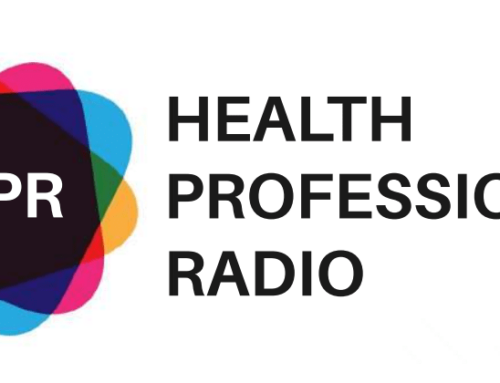“We need to recruit more volunteers”. “We need to increase the mandatory number of hours to get these shifts covered”. “Can someone PLEASE cover Friday night”?
Does this sound like your service? Comments like these linger in the hallways and meeting rooms of agencies all across the country until finally a lone voice from the back asks, “Should we just hire some paid people?” What was considered a question destined to provoke bitter backlash now is becoming reality.
Regardless of the relative success of the 1,000 Points of Light campaign in the early 90’s or the resurgence of patriotism after the events of a fateful day in September, 2001, we have to face facts. In a great majority of fire and EMS agencies across this country the well of volunteerism is drying up.
Volunteers have long been the backbone of not-for-profit organizations all across the country. From ambulance services and fire departments to youth sports leagues, community support groups and even national agencies like the American Red Cross, recruiting and retaining motivated volunteers is a topic of paramount importance.
I tell community leaders all across the country that a well-run, business oriented, emergency service agency staffed by as many volunteers as possible is the best bargain on the planet. There is a slightly different sense of pride driven by the commitment to giving back to the community and of course, the lower operating costs due to the lack of significant payroll.
That being said, when the response times, coverage of duty hours, increased reliance on the goodwill of mutual aid or the quality of service begins to suffer it’s time to assist, supplement or disband the agency.
Now that statement I am sure just outraged some readers. That’s ok, someone has to say it. Emergency service agencies are entrusted with a special mission, protecting property and saving lives. When someone needs an ambulance or the Fire Department, regardless of where they are in the country, they don’t care whether the responder is short, tall, male, female, paid or volunteer. They only want the customer service mission [taking care of their emergency] to be accomplished in a timely, proficient and professional way. Protecting the sanctity of having a volunteer service is not paramount to fulfilling the trust that the community places in us. If your agency is having issues doing that, fix it.
The growing reality is the demands on double working families, more people working out of town and numerous other things impacting our time, many organizations are beginning to ‘fix’ their problems by integrating paid staff. The goal is to insure coverage during problem areas in operating schedules, typically during the daytime hours. (6am-6pm).
On the surface, this solution appears to be the magic bullet for what ails the agency. The truth is that if the integration is not done properly there will be an entirely new set of issues created.
Morale problems, additional decreases in volunteer participation, general hard feelings towards the spirit of volunteering, “this is no fun anymore, it’s becoming a business”(heard that one lately), a ‘them – vs. – us’ mind set, as well as a host of other highly emotional issues that can bring an agency to its knees. You don’t have to go there. And, if you are already there, you can turn things around.
This article will discuss how to successfully integrate paid personnel into your organization while, if you so choose, while retaining as many volunteers as possible.
It will also teach you how to RESET the system if it’s already in trouble.
We’ve identified four main reasons why an organization looks to hire paid staff:
Overall staffing shortages
Due to a lack of participation, attrition, retirement, morale problems or lackluster recruiting campaigns, your agency is simply short of the necessary number of trained personnel. There is a national staffing crisis right now. As senior staff cut back or retire, there are not lines of trained staff waiting to take over. In fact, the smaller the community, the worse it gets.
Increasing response times/service failures
Burnout, morale, physical distance from the building and increasing call volumes all strain the organizations ability to respond. Unmotivated or overburdened personnel move slower when responding to the building. Over time, people relocate or build in new developments and now live farther away from the station.
Adding ALS personnel
There is a shortage of ALS personnel in most areas of the country. Very few ALS personnel volunteer in the ALS capacity. Fewer volunteers will submit to 1,800+ hours of paramedic training. In order to upgrade the level of service, hiring paid ALS staff may be the only way.
Supervision of the service
Paperwork, OSHA, HIPAA, OEMS, and billing all require time. Many agencies look towards hiring a paid supervisor/administrator who can handle the operations responsibilities as well represent half of the crew.
Things to consider BEFORE placing the Help Wanted Ad
Fair Labor Standards Act (FLSA) and Loss of Volunteer Staff
This is governmental legislation originally passed in 1938 and amended in 1985 which provides for fair working conditions for all employees. For our purposes, it basically identifies that an employer must pay an hourly wage that is at least minimum wage and it also prohibits paid staff from volunteering for the same ’employer’. Therefore any volunteer member who makes the transition to a paid position, even for one shift, is lost to the agency as a volunteer for other calls at other times.
This means that if you are not careful, by solving the daytime staffing problem you may create a void in other areas since the personnel would be lost as volunteers when their shift was over.
As the late EMS Attorney Allison Bloom wrote in an article for the Wisconsin EMT Association, “The effect of the FLSA on volunteer EMS is not to be taken lightly. The penalties alone can put just about any service out of business”.
Make sure that your hiring plan takes into account the necessary budget for hourly wages, overtime, and if applicable, benefits if you’re hiring full time. One of the most common problems with hiring paid staff is underestimating the budget.
Full time vs. per diem vs. leased employees
Before you hire, develop a staffing plan. This sounds like silly advice but sadly the reality is that most organizations have not identified the hours to be staffed, added them up to actually determine how many people they need to hire.
Do you want the continuity of a few full time employees? This means benefits, supervision, and the need to be able to cover vacations and sick time, etc.
How about a large group of per diem staff? This option offers potentially greater flexibility but increases the uniform budget, numbers of pre-employment physicals, training which is offset by not having the costs of health benefits. The other downside it that there is typically less continuity and potentially less loyalty to the shift if overtime or mandates happen at their full time job.
A relatively new concept is leasing EMS employees. Actually, the concept is not new, business and other healthcare groups have been using temporary help services for years. A company in Connecticut called Vintech (www.emsstaff.com) did just that. They created, to this author’s knowledge, the first ever temporary help firm specializing in EMS personnel. There are several more now, but they were the first.
Vintech’s founder Vinny Wheeler is quick to point out the value of leasing employees. “You can outsource the headaches. Hiring, firing, handling book-offs, paying workers compensation premiums on the paid staff and having a limited depth of personnel. You simply identify the hours to be staffed, the level of certification you want and write the check, we do the rest”.
He is also quick to point out the biggest benefit, which might go unnoticed, is that this type of arrangement does not violate FLSA. Your agency is able to retain your volunteers. If members of your staff work for an agency like Vintech, while on duty, even in your station, they are the agency’s employees. Not yours. This means that when these same people are off duty, they should still be able to take shifts as volunteers. (Check your local labor laws – this varies from state to state)
Hiring process
If you choose to hire your own employees, which many organizations do, make sure that you have a reasonably stringent hiring process. Remember you are hiring people and creating jobs, make the job one worth having. Candidates should work for them.
We suggest a five part process:
1) Application with resume
This allows a review of applications. All candidates, even internal candidates, apply for these new positions in the same manner. I would suggest a member in good standing that applies be granted a 5 point bonus to their score as a gesture of goodwill.
Anyone meeting the written minimum education and certification standards on paper makes it to the next phase.
2) Written EMT or Paramedic exam
A basic knowledge exam consisting of perhaps 50 questions. Ask your EMS Coordinator or Regional Training person for help or purchase a test bank and construct a test of your own. Identify the minimum passing grade in the written invitation letter. We suggest 80% as the passing mark. Those that pass make it to the next phase.
3 & 4) Oral Interview and Practical skills station
Conduct a 20-minute interview with a list of pre-written questions. Use the same list for every candidate. Ask scenario based questions that require longer answers.
Halfway through the interview stop, escort the candidate into another room and present them with a medical or trauma practical station. Score them with a standard evaluation sheet. At the conclusion of the practical evolution, escort them back and finish the oral interview.
5) Documentation
At the conclusion of the interview hand them a blank run report and ask them to document the care they gave in the practical station.
Rationale for this system:
· The application process weeds out initially unqualified candidates based on certifications and length of service.
· The test weeds people with weaker book knowledge.
· The oral/practical test their ability to communicate, evaluates their treatment skills and also their ability to switch gears.
· The documentation process done this way tests their ability to remember and accurately chart events under stress. When was the last time a run report was done immediately after a call?
I have used this system for years and when the scoring is done, the best, well-rounded candidates have always risen to the top.
Regardless of the staffing pattern that you choose, make the job worth having and make sure your organization is a place you’d like to work. More on transforming your workplace in an upcoming post.





